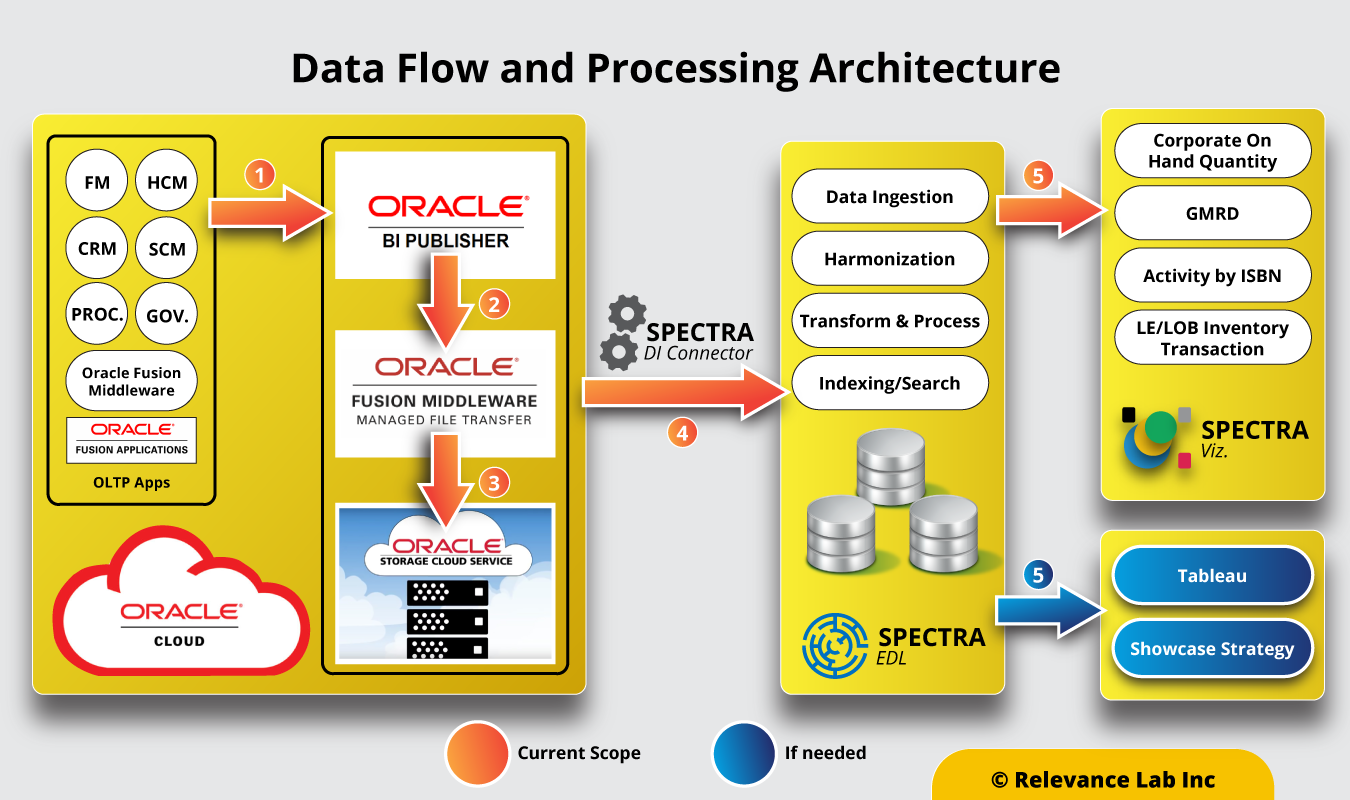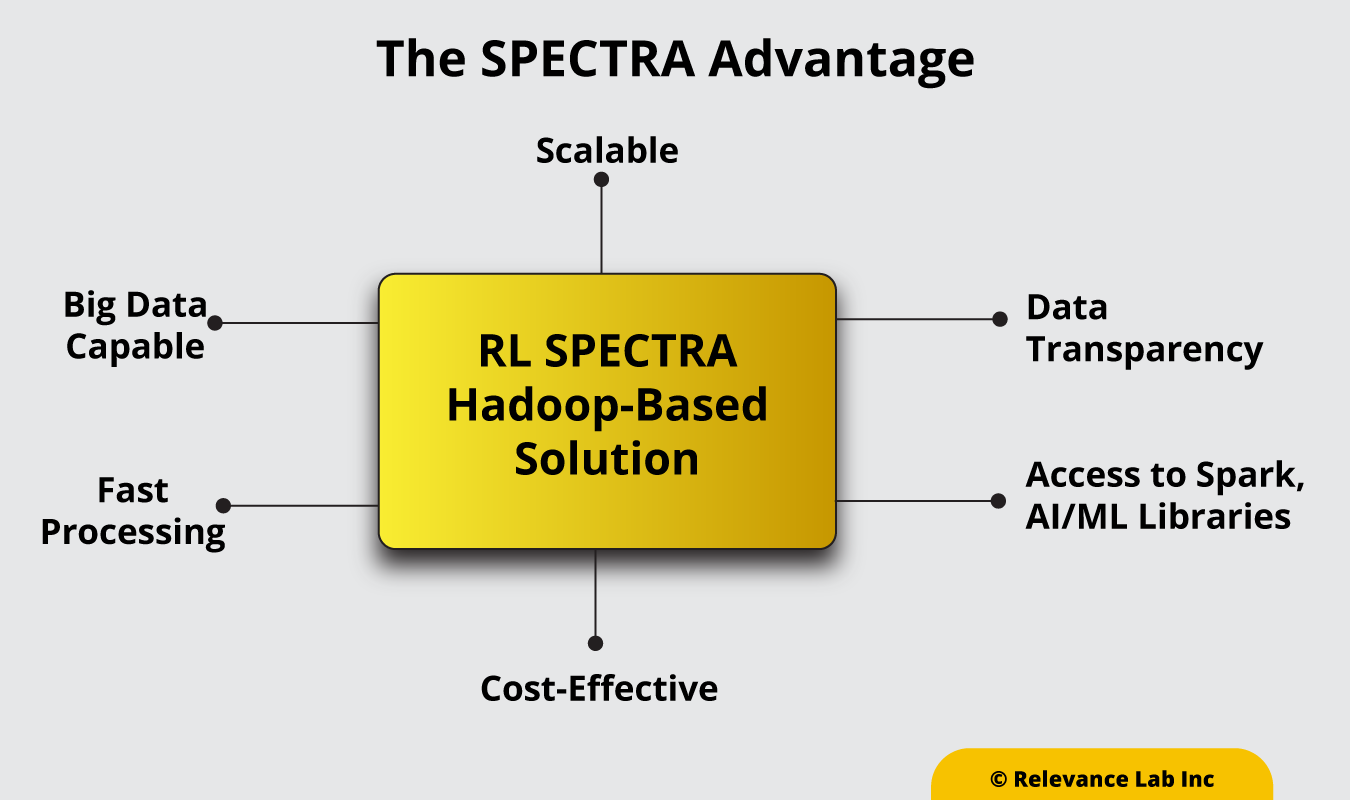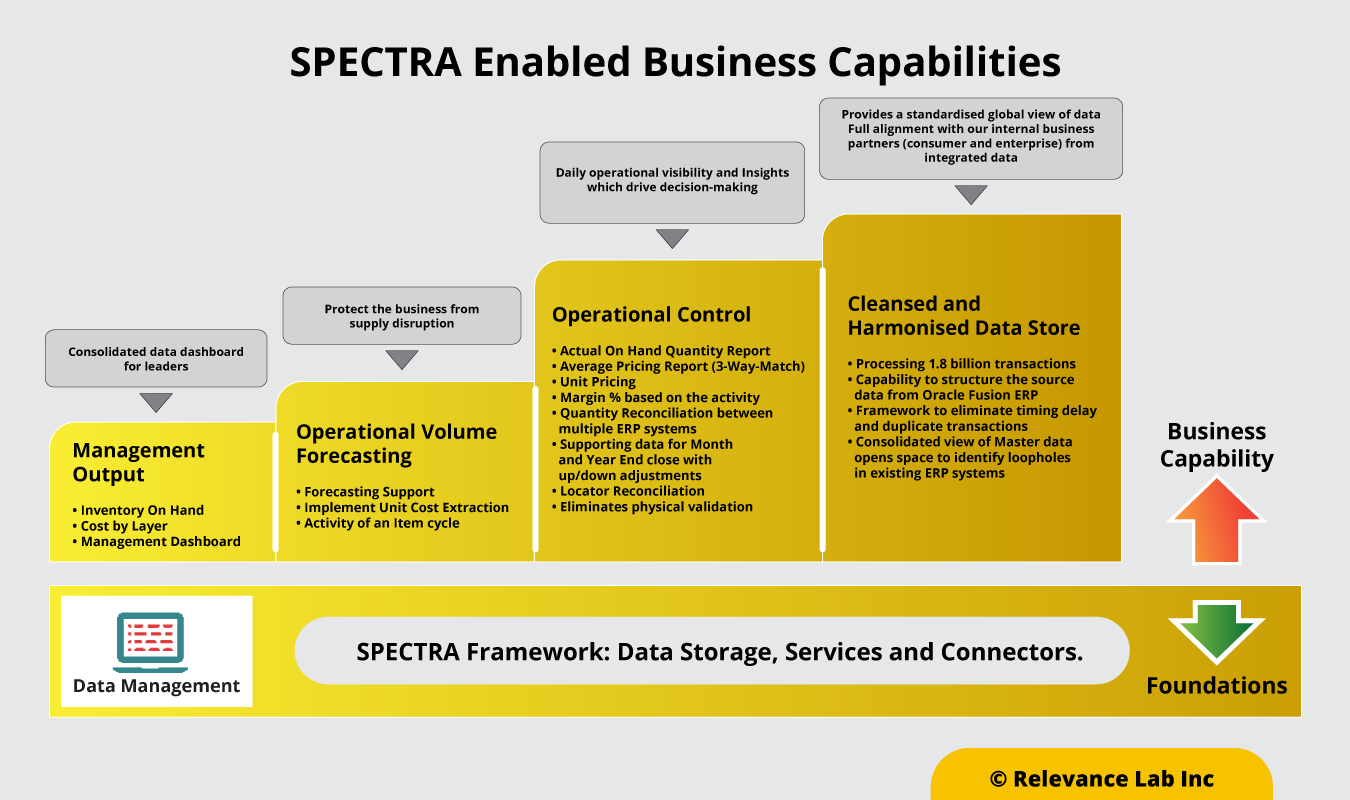2020 Blog, Blog, Featured, ServiceOne, ServiceNow
AWS provides a Service Management Connector for ServiceNow and Jira Service Desk end users to provision, manage and operate AWS resources securely via ITSM Portal. However, a similar solution does not exist for FreshService. The same maturity of end to end automation for Freshservice customers can be provided by using Relevance Lab’s RLCatalyst BOTs solution. It will provide an Automation Service Bus between ITSM tools and AWS Cloud assets.
Freshservice is an Intelligent Service Management platform, which comprises of all the essential modules like Incident Management, Problem Management, Change Management, Release Management, Project Management, Knowledge Management and Asset Management including Hardware, Software and Contracts. It also provides consolidated reports including analytics.
Many customers are adopting Freshservice as an ITSM cloud based solution and orchestrating self-service requests for organizations. One of the common automation needs is for User and Workspace onboarding and offboarding that involves integration with HR systems, AWS Service Catalog and AWS Control Tower for proper management and governance. Similarly using Infrastructure As Code model, organizations are using Cloud Formation based template models for complex workloads provisioning with 1-Click models.
The Freshservice workflow automator with RLCatalyst BOTs integration helps in automation of simple repetitive tasks like assignment of tickets to the right groups, and setup of multi-level approvals. It is a simple drag and drop interface which can help to automate most of the simple use cases. In addition, the webhook option allows automation of complex workflows or use cases by integrating with the right automation tools. In addition to this, the business rules for forms feature will enable you to describe conditional logic and actions to create complex dynamic forms.
The below diagram illustrates the Integration Architecture between FreshService, AWS and RLCatalyst.
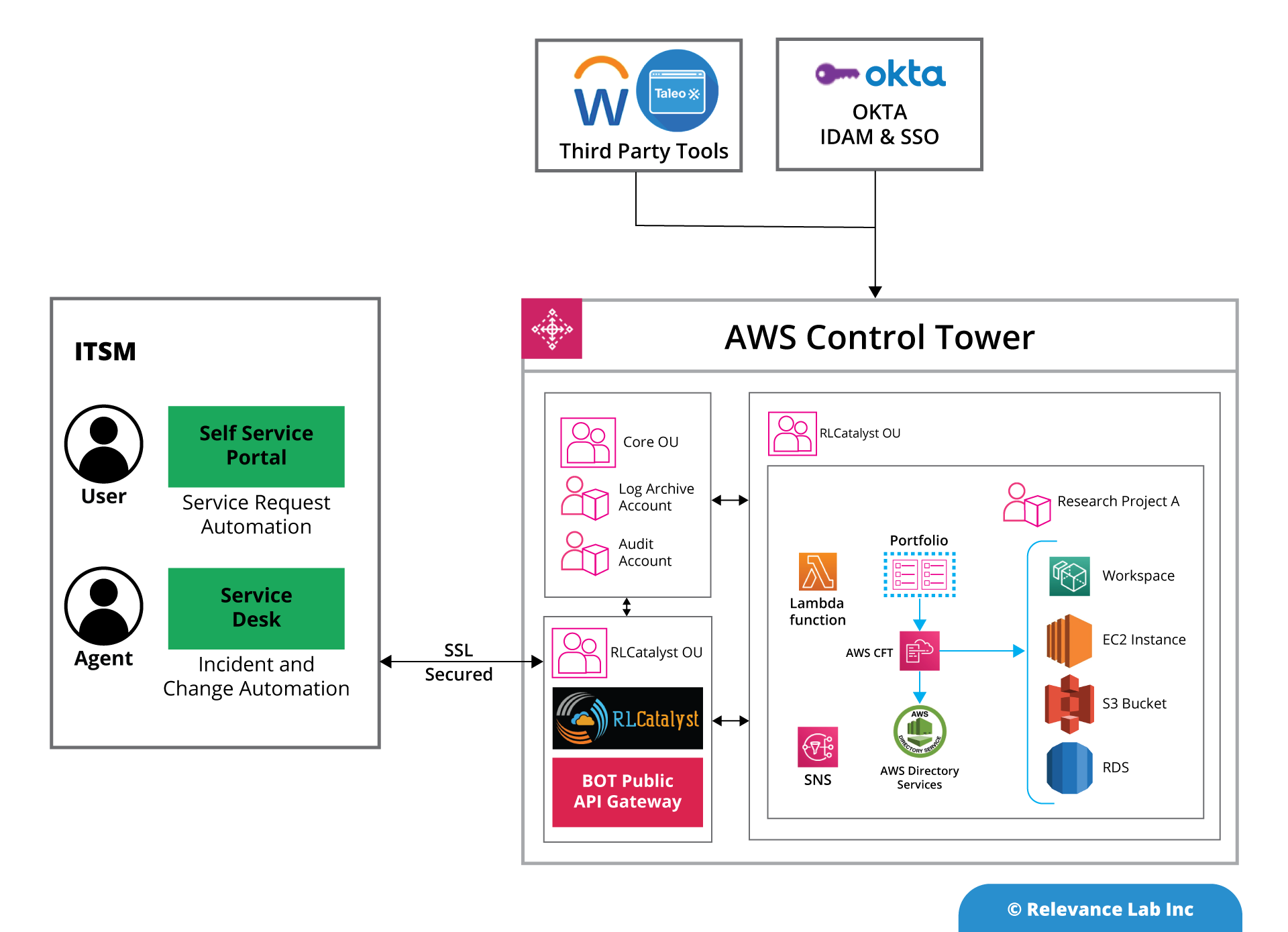
Using the integrated solution, organizations can automate use cases related to both End User Computing (EUC) and other standard Server side workloads provisioning. Two common examples are :
- User and Workspace Provisioning : Onboard a new user and request for an AWS workspace where the original request is generated by Workday/Taleo.
- Server Infrastructure Provisioning, Application Deployment and Configuration Updates : Request for provisioning of a complex multi-node workload using Service Catalog item fulfilled with an AWS Cloud Formation template and post provisioning setup.
The below diagram illustrates the following EUC automation.
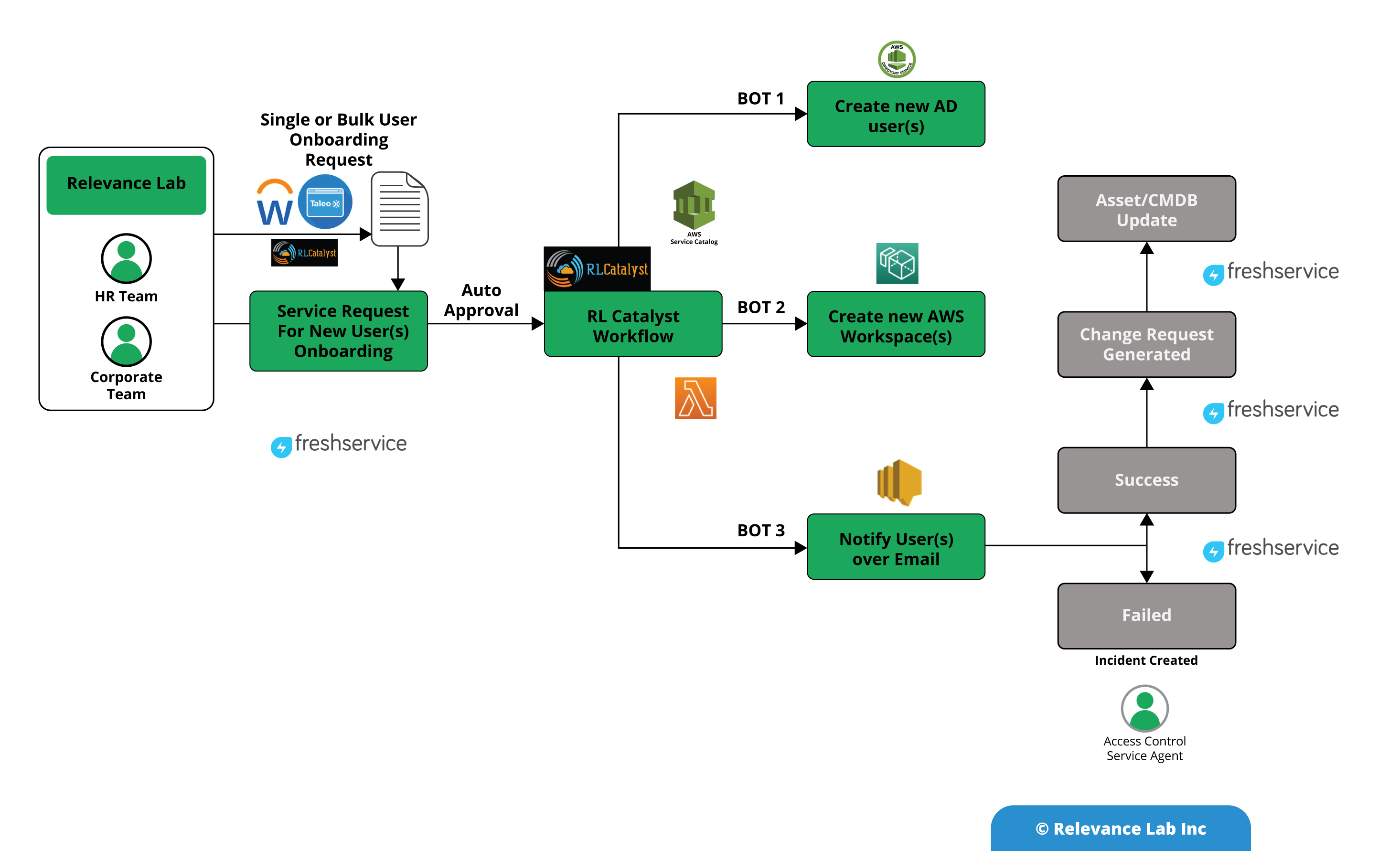
The steps to Onboard a new user and Workspace in an automated are as follows.
- RLCatalyst enables Freshservice to create an Service Request(SR) using the file generated from Workday or Taleo.
- Once an SR is created, the workflow automator of Freshservice triggers the approval workflow for either auto approval, cost based approval or role-based approval.
- Based on the approval workflow defined, and successful execution of the same, the next step is to request RLCatalyst to trigger the onboarding workflow within RLCatalyst.
- RLCatalyst, then enables the BOT 1for creation of a user in simple AD.
- BOT 2 sends out a request for provision of AWS workspace, while the BOT3 looks for the status of the workspace creations.
- Once the status is received on the successful provision by the BOT3, the workflow instructs the AWS SNS to send out a notification email to the end user with the workspace details and login credentials.
- Finally, RLCatalyst sends a request back to Freshservice for the successful closure of the SR.
- In case of failure of workspace provision, RLCatalyst will instruct Freshservice to create an Incident to check for the Root Cause Analysis(RCA).
Similarly, a user can request for a multi-node application stack deployment in AWS using Freshservice service catalog. The below diagram illustrates the following :

- Create the infrastructure with multiple AWS resources (EC2, S3, RDS etc).
- Deploy one or more applications on the instances created (Web Tier, App Tier, DB Tier).
- Configure the application with the run-time information. e.g. DNS endpoint creation, bind the listening IP address of an application to the IP address of the instance created. Then update YAML files with environment variable values etc.
- Deploy the monitoring agents like Infra health, App health, Log monitoring and Service Registry.
- Setup network configurations like hosted zones, routes etc and setup security configurations like SSL certificates.
The multi-stage orchestration requires a workflow for state and context management during the lifecycle and this is provided by using RLCatalyst Workflow capabilities.
Relevance Lab is a solution partner of Freshservice. We assist the enterprises to adopt AWS Cloud with intelligent automation using RLCatalyst BOTs. Relevance Lab also offers a pre-integrated solution of ServiceOne with Freshservice.
For a demo video and for more details, please
click here.
For more details, please feel free to reach out to
marketing@relevancelab.com

